The Backstory on Some Common Computer Terms.
As more and more daily activities are being done with digital devices, the words used to describe those activities are becoming associated with the devices, even though many of the ativities were done long before the devices existed. The result is that we sometimes forget where the terms originally came from. Here is the background on a few expressions we use daily.
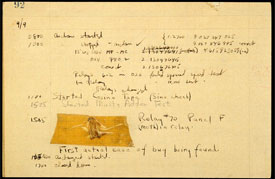
Bug. Little glitches are often referred to as “bugs.” Many people, however, don’t realize that popular use of this expression1 began when an actual insect found its way inside a computer at Harvard.
On September 9, 1947, technicians looking for the cause of a system malfunction found a moth stuck in one of the relays of an electro-mechanical computer. They removed the dead insect and taped it to the system’s log book, noting “First actual case of bug being found.”
One of the lab’s scientists, computer pioneer Grace Hopper, heard about this and referred to the process as debugging the system. Apparently she liked the expression so much that whenever anyone else had a problem she asked if they had found the bug. The expression stuck and the log book and attached bug are now at the Smithsonian.
Cut and Paste. Today, the words cut, copy and paste are core terms in the computer vocabulary. These commands have been in every Macintosh program since the first units shipped in 1984 and now are taken for granted in all software programs. But there was a time when writers literally used scissors and tape to edit their work.
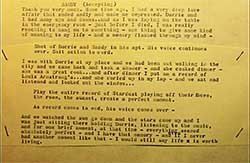
Changes and corrections were a big deal in the typewriter era. Small changes could be made by erasing a word or two and typing replacement text in the same place. But insertions and deletions, or moving a phrase meant retyping an entire page.
Professional typists, therefore, developed editing techniques where they literally cut a typed page, rearranged the pieces including any insertions and then carefully pasted or taped everything back together. The revised page was then photocopied to produce a clean sheet whose editing scars hopefully were not visible.
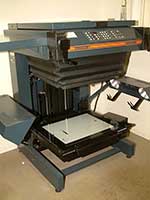
Woody Allen has used this method for every script and article he has written. The sample image is from a demonstration he gave in a 2011 PBS documentary (view clip).4 He, of course, doesn’t have worry about the staples being visible since someone will retype the final copy for him.
Clip Art. Need a quick graphic for a slide show or report? Just get some clip art from your software or an on-line gallery. But why call it clip art, nothing gets cut?
Because once upon a time, clip art literally was cut from a source book and pasted into a project. Newspapers and advertising agencies subscribed to clip art services, which periodically delivered sheets of new images. If the printed image wasn’t the right size, an enlarged or reduced version was created with a stat camera. Hobbyists and students could buy clip art books and make enlargements and reductions with a photocopier.
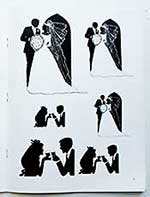
One of the early publishers of digital clip art, T-Maker, called its images ClickArt, in an attempt to update the terminology to the digital age. Tradition dies hard, however, and clip art is still clip art, even though nothing gets clipped anymore.
Bit. Computer talk is full of bits and bytes. The bit is the smallest unit of digital information, it is either a one or zero. The term is short for binary digit and was coined by John Tukey in a 1947 Bell Labs memo.6 Incidentally, the word “bit” is linguistically considered a “portmanteau word,” which is a word created by combining the sounds and meanings of several words. Other examples include “brunch” (“breakfast” and “lunch”), “motel” (“motor” and “hotel”) and “smog” (“smoke” and “fog”).
Pixel. People talk about pixels as though they began with the iPhone and digital photography. The term, however, actually comes from the early days of broadcast television. It’s short for picture (pix) element (el).7
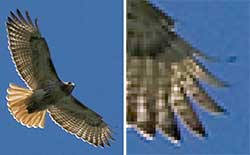
A pixel is a dot, typically so small that individual pixels can’t be seen when viewed at normal size. The enlarged view of the wing feathers shows how the photograph of the hawk is made up of tiny colored dots. The more pixels (or megapixels) in a digital image, the more it can be enlarged without the individual pixels being visible. For more information about pixels, see How Many Pixels Are Enough?
* * * * *
Language is always evolving — it’s interesting to see how it adapts as the world changes. One wonders how many of the words discussed here will still be in use ten years from now and what they will mean to the people of that day.
-----
- American engineers as far back as Thomas Edison in the 1870s have referred to small problems as bugs, but it’s the moth at Harvard that brought the expression into the popular lexicon. See Smithsonian Institution’s item description for Log Book With Computer Bug.
- Log book in the collection of the Smithsonian Institution’s National Museum of American History (view on-line).
- Screen capture from Woody Allen: A Documentary, aired November 2011 on American Masters.
- Video link from Woody Allen’s Writing Tools (what do you really need to work?) from Improvised Life web site.
- Image from Museum of Forgotten Art Supplies web site.
- From Wikipedia article on Bit.
- According to the Wikipedia article on pixels, Frederic C. Billingsley used the word “pixel” to describe images from space probes in some 1965 publications. Billingsley said he had learned the word from Keith E. McFarland, who in turn said it was “in use at the time” (1963), although he didn’t know where it originated.
This article originally appeared in our free semi-monthly newsletter. To receive future issues, please add your name to the subscription list.

